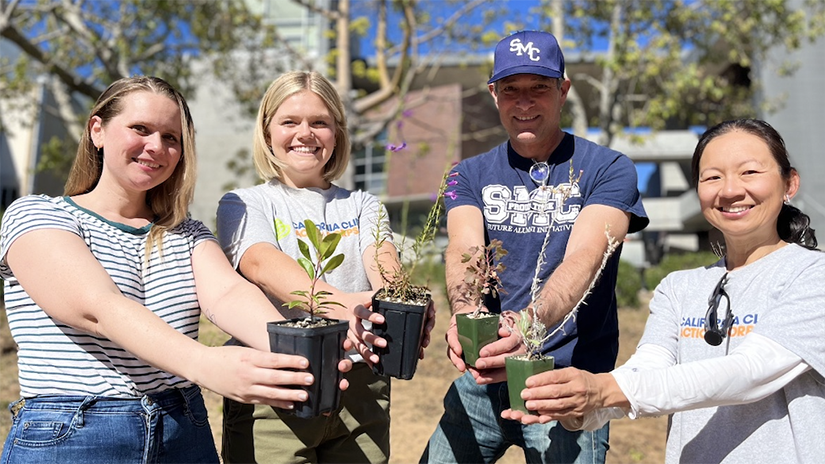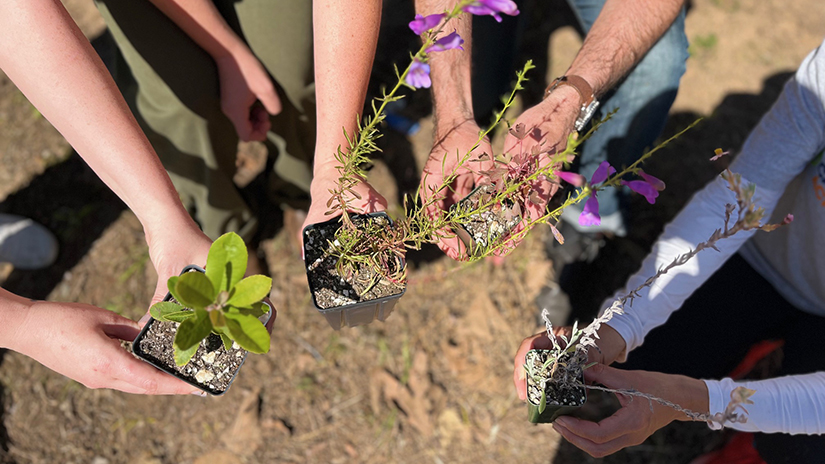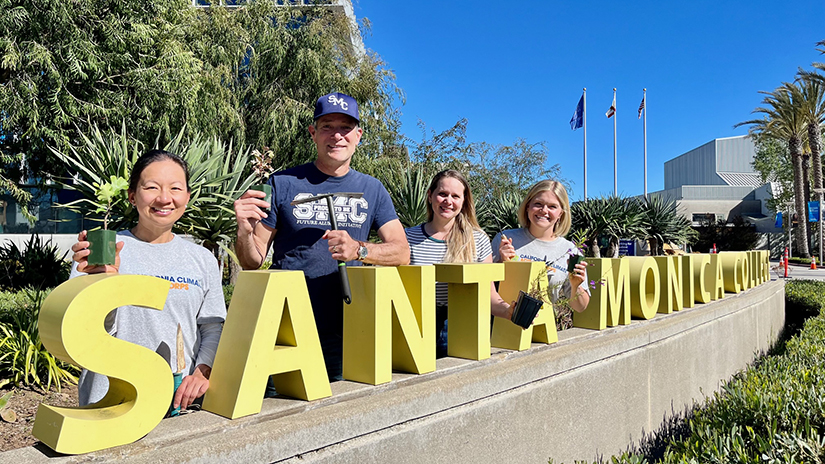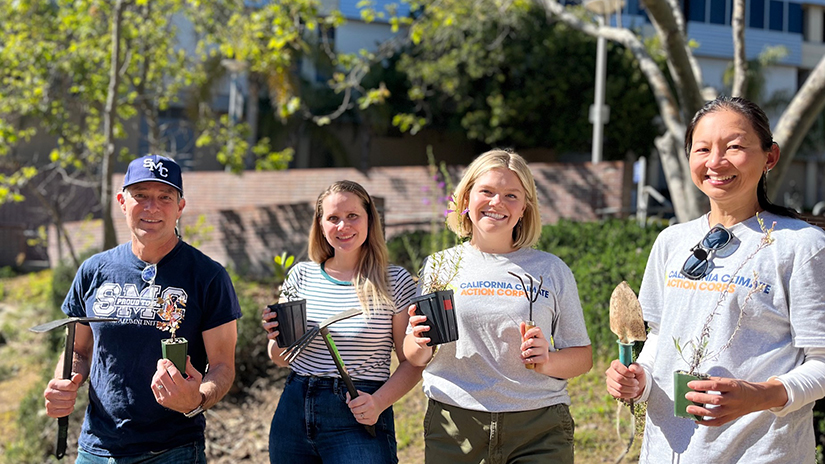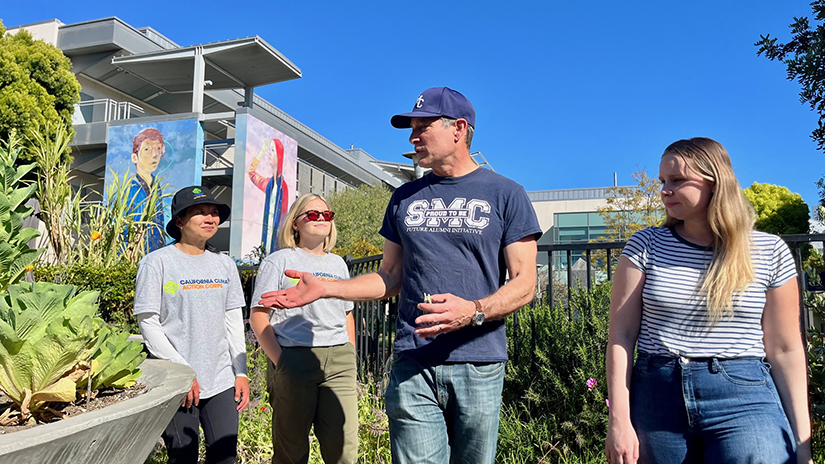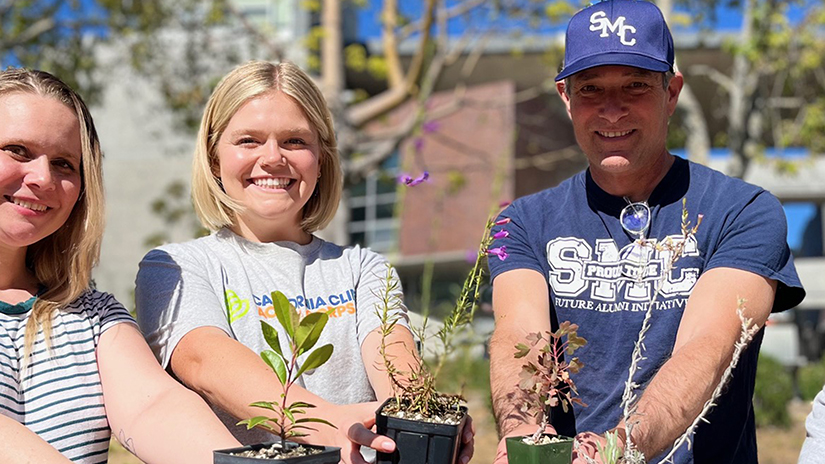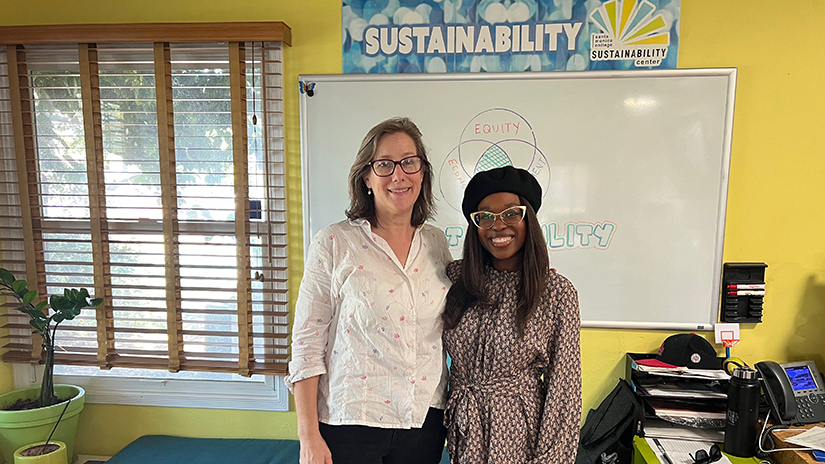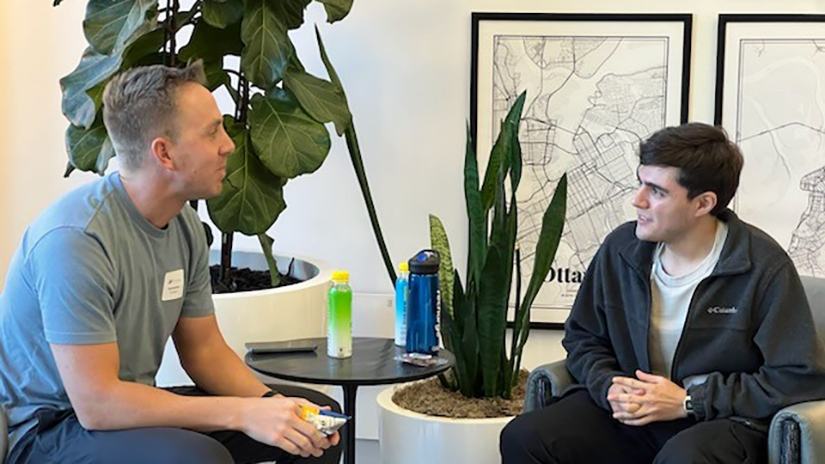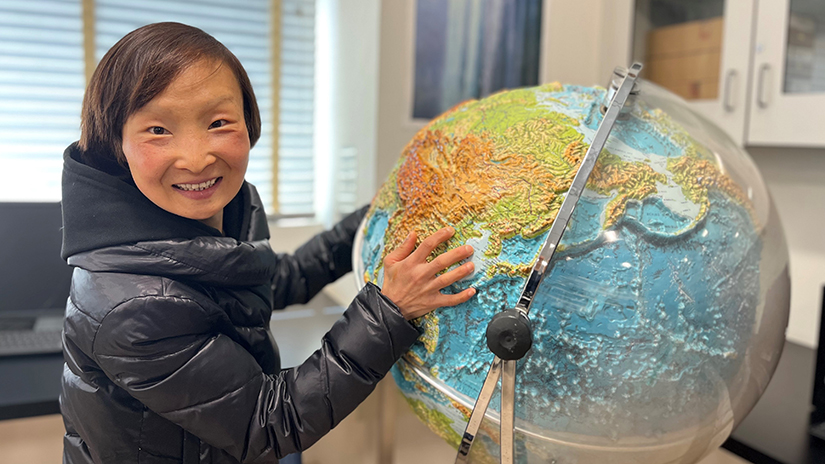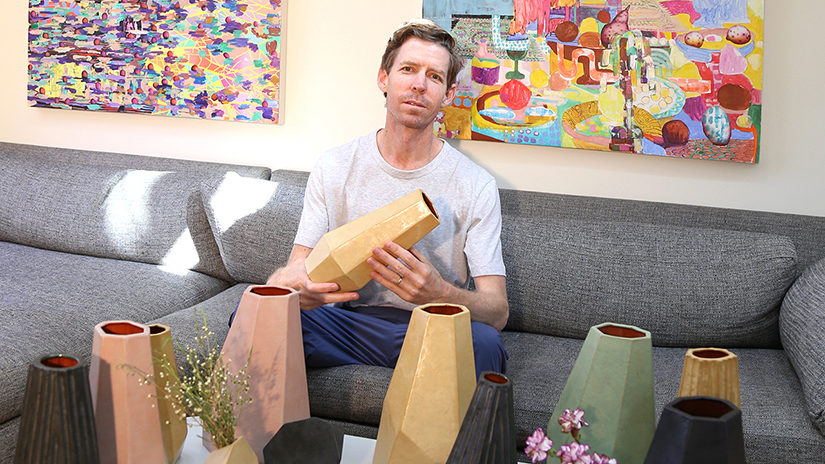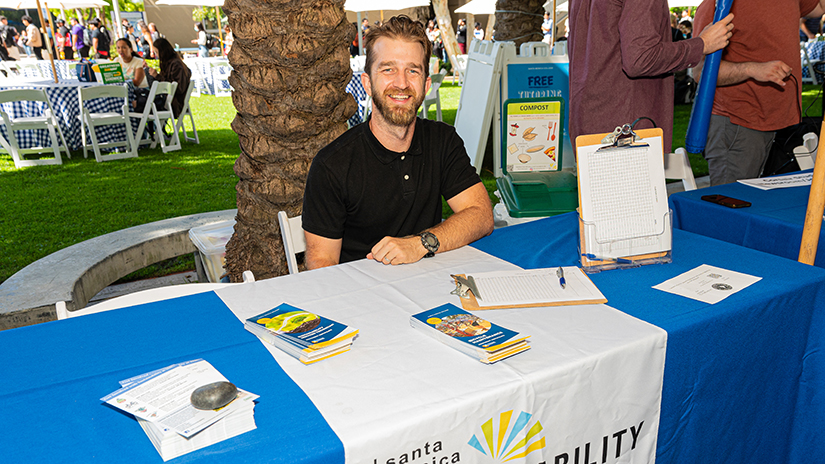
The crisis of soaring temperatures and vanishing species can no longer be ignored, but Santa Monica College is showing a practical way that we can all make a difference. With support from the Malibu Foundation, SMC is adding a microforest to the center of its main campus.
“As far as we know, this is the first microforest at a community college in the United States — and possibly in the world,” says Scarlet Eskew, Malibu Foundation grants and program manager. “We wanted to partner with SMC because the college has a robust sustainability program, and we knew that students and staff were passionate about what our foundation does and why these microforests are so beneficial.”
Restoring Biodversity
Pioneered in the urban densities of Japan, microforests are tiny preserves that mimic natural woodlands — but grow nearly five times faster. Diverse plants of different heights are planted closely together, forming layers of vegetation from underbrush to flowering shrubs to understory and shade-giving overstory trees.
“Nature doesn’t grow forests in straight lines, and it doesn’t only put down one type of seed,” notes SMC Director of Sustainability Ferris Kawar. But, he adds, the microforest’s planning ensures that “some plants will grow to be very low to the ground, some medium and others tall, so they can all get sunlight.”
Not only are all the plants native to the region, supporting the local environment rather than invading it, but they are also edible and medicinal. And as the forest’s ecosystem becomes self-sustaining, its plants will need very little water.
The SMC microforest will only take up around 300 square feet, but that space will become a biodiverse habitat for the pollinating insects, birds and small animals that are so vital to our environment. The plants will also help clean the air of pollutants that cause climate change while helping cool the surrounding area.
“Microforests sequester carbon two and a half times faster than conventionally grown landscapes,” Ferris says.
Growth of Knowledge
Just as microforests are constituted by layers of life, the SMC initiative provides layers of education and research experience for students. For example, Life Sciences Associate Professor Poliana Raymer will use it as a living laboratory in teaching Biology 10. “Students will evaluate the microforest’s plant growth, examine how microbes feed and develop its soil, and study the insects and animals it attracts,” she explains.
“We’re really excited that the students at SMC will have an opportunity to do hands-on science and in-depth research,” Scarlet says of the partnership.
“As soon as I heard about the project, I wanted to get involved and bring it to my students,” SMC Assistant Professor Jessie Salter says. As an organismal biologist focused on how life functions and evolves, Jessie looks forward to “having students monitor the diversity of pollinators that visit the plants and conduct point counts of bird species” to estimate their growing abundance in the area.
Meanwhile, as the trees grow, Poliana’s students will measure them to calculate the amount of carbon they capture. This will build on her class’ work with the City of Santa Monica that assesses tree growth in neighborhoods to estimate the pollution being cleared.
“It’s a really neat collaboration, because the city would love to know these numbers, but they don’t have enough staff to do the measurements,” Ferris says. “The students get real-world experience, and the city gets accurate data.”
The knowledge gleaned could have global impact as well. Since, microforests are relatively new to this part of the world, most of the information about them comes from Japan and India, where the technique has more history. However, everything from soil to climate to native species differs from region to region.
“By partnering with Santa Monica College, we hope to get hard data that can drive policy change in Los Angeles and across California,” Scarlet says.
Greener Future
A troubling sign of environmental degradation is that we hear the word “deforestation” far more often than “afforestation.” The latter refers to establishing forests that are completely new, like the SMC initiative and the Malibu Foundation’s other work in Southern California. The planting at SMC marks the fourth microforest the foundation has supported this year —
with many more to come.
SMC students are committed to the project and the greener future that it portends. “This generation cares about sustainability, and they want to make an impact,” Jessie observes.
Since microforests can be planted in areas as small as 100 square feet, SMC and the Malibu Foundation are helping provide a model that individuals as well as organizations can follow. These woodlands are low-maintenance as well. Once the plants are up and healthy, the forest thrives on its own as an example of nature in action.
“As the bugs and worms feed, and bacteria breaks material down, more soil is made to feed growth,” Ferris notes.
“You’ll see a forest popping up within the first year, and it will really change the landscape of the area you plant it in,” Scarlet says. It will also make our planet a little healthier, and the more people who plant microforests, the better off we’ll all be.
* * *




